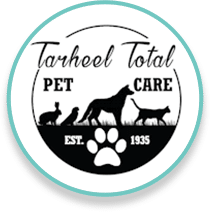As pet parents, we cherish the love and companionship our furry friends provide us. Ensuring their well-being is our top priority, including taking care of their dental health. Just like with humans, good oral hygiene is essential for our pets’ overall health and happiness. In this article, we’ll dive into the world of pet dental hygiene, exploring the key aspects of maintaining your pet dental health. From brushing techniques to dental treats, we’ve got you covered.
When it comes to pet dental health, there are several key practices you can incorporate into your routine: Regular brushing, dental chews and toys, professional dental check-ups, balanced diet, and avoiding human products.
Key Takeaway:
- Regular brushing with pet-specific tools is crucial for preventing plaque and tartar buildup and ensuring your pet’s dental hygiene.
- Dental chews and toys are valuable tools for reducing plaque and tartar while providing entertainment for your pet.
- Professional dental check-ups are crucial for early detection and treatment of dental issues, ensuring your pet’s long-term oral health.
- A balanced diet, including dental-specific options, is essential for your pet’s oral health and overall well-being.
- To keep your pet safe, never use human toothpaste or dental tools on them. Stick to pet-specific products recommended by professionals.
Keep reading to discover more tips and insights on how to ensure your beloved pet dental health is in tip-top shape, ensuring they enjoy a lifetime of healthy smiles and wagging tails.
Essential Practices for Optimal Pet Dental Health
Regular Brushing
One of the fundamental practices for maintaining your pet dental health is regular brushing. Just like us, pets can benefit greatly from this simple routine. Here’s how you can get started:
- Choose the Right Tools: Opt for a pet-specific toothbrush and toothpaste. Human toothpaste can be harmful to pets, so it’s essential to use a product specifically designed for them. These are available at most pet stores and veterinary clinics.
- Gradual Introduction: If your pet isn’t accustomed to teeth brushing, start by gently massaging their gums with your finger. This helps them get used to the sensation.
- Brushing Technique: Hold the toothbrush at a 45-degree angle and brush their teeth gently in a circular motion. Pay extra attention to the gum line and the back teeth, where plaque tends to accumulate.
- Be Patient: Some pets may resist initially, so it’s essential to be patient and gentle. Gradually increase the duration of the brushing session as your pet becomes more comfortable.
- Frequency: Aim to brush your pet’s teeth at least 2-3 times a week. Consistency is key to maintaining your pet dental health.
Dental Chews and Toys
In addition to regular brushing, dental chews, and toys play a vital role in promoting your pet’s oral health. Here’s why they matter and how to use them effectively:
- Plaque and Tartar Control: Dental chews and toys are designed to reduce plaque and tartar buildup on your pet’s teeth. They often have textured surfaces that help remove debris.
- Choose Appropriate Products: Look for dental chews and toys that are the right size for your pet and made from safe materials. Consult your veterinarian for recommendations.
- Incorporate Them Into Playtime: Use dental toys during playtime to make oral care enjoyable for your pet. Interactive toys that dispense treats can be particularly engaging. With proper training, dental toys can also stop your pets from chewing everything.
- Supervision: Always supervise your pet while they’re using dental chews and toys to ensure their safety.
- Regular Replacement: Replace worn-out dental chews and toys as needed to maintain their effectiveness.
Professional Dental Check-ups
Regular visits to your veterinarian for dental check-ups are essential for maintaining your pet’s oral health. Here’s why these check-ups matter and what to expect:
- Early Detection of Issues: Professional dental check-ups can detect dental problems early, such as gum disease, tooth decay, or oral tumors.
- Anesthesia: In many cases, dental procedures for pets require anesthesia. Your veterinarian will discuss the anesthesia process and answer any questions you may have.
- Scaling and Cleaning: During a dental check-up, your veterinarian will perform a thorough cleaning and scaling of your pet’s teeth, removing plaque and tartar.
- Treatment Plans: If any dental issues are discovered, your veterinarian will create a treatment plan, which may include extractions or other necessary procedures.
- Follow-up Care: After the dental procedure, your veterinarian will provide instructions for post-operative care and any necessary medications.
Balanced Diet
Diet plays a significant role in your pet’s overall health, including their dental well-being. Here’s how to choose the right diet for optimal dental health:
- Dental Diets: Some pet food brands offer specialized dental diets designed to promote oral health. These diets typically have a texture that helps reduce plaque and tartar.
- Consult Your Veterinarian: Consult with your veterinarian to choose the right diet for your pet’s specific needs. They can recommend the best options based on your pet’s age, breed, and health.
- Avoid Table Scraps: Limit giving your pet table scraps and sugary treats, as these can contribute to dental problems.
- Fresh Water: Ensure your pet has access to clean, fresh water at all times, as this helps flush away food particles and bacteria.
- Regular Feeding Schedule: Establish a consistent feeding schedule for your pet to promote healthy digestion and reduce the risk of dental issues.
Avoid Human Products
It’s crucial to understand that human dental products are not suitable for pets and can be harmful. Here’s why you should always use pet-specific oral care items:
- Harmful Ingredients: Human toothpaste contains ingredients that can be toxic to pets if ingested, such as fluoride. Pet toothpaste is formulated to be safe.
- Toothbrush Design: Pet toothbrushes have softer bristles and are designed to accommodate the shape and size of your pet’s mouth.
- Dental Tools: Human dental tools are not suitable for pets and can cause injury or damage to their teeth and gums.
- Follow Safety Guidelines: Always follow safety guidelines and recommendations from your veterinarian when it comes to your pet dental health.
Tips for Overcoming Challenges
Implementing these dental care practices may present some challenges, especially if your pet is not used to them. Here are some tips to make the process smoother:
- Start Early: Begin dental care routines when your pet is young to help them get accustomed to the process.
- Positive Reinforcement: Reward your pet with treats and praise after each successful dental care session.
- Be Patient: Patience is key. If your pet resists initially, don’t force it. Gradual progress is still progress.
- Consult a Professional: If you’re unsure about any aspect of your pet’s dental care, consult your veterinarian for guidance.
- Regular Check-ins: Schedule regular check-ins with your veterinarian to track your pet dental health progress.
Keep Your Pet Smiling: The Key to Lifelong Dental Health and Happiness
Your pet dental health is a critical aspect of their overall well-being. By following these five essential practices—regular brushing, dental chews and toys, professional check-ups, a balanced diet, and avoiding human products—you can ensure your furry friend enjoys a lifetime of healthy smiles and good health. Remember, a little effort in maintaining their dental hygiene goes a long way in keeping them happy and comfortable.
Connect with Tarheel Total Pet Care for personalized advice and services. Call us at (908) 234-0644 to not only ensure optimal pet dental health but also provide them with a comfortable and loving boarding experience. Let’s work together to ensure your beloved pet’s smile stays bright!
Is it normal for my pet to have bad breath, or could it be a sign of a dental problem?
Bad breath in pets, often referred to as “doggy breath” or “kitty breath,” is relatively common, but it shouldn’t be ignored. While occasional bad breath can be normal, persistent and exceptionally foul-smelling breath could indicate an underlying dental issue, such as gum disease, tooth decay, or an oral infection. It’s essential to monitor your pet’s breath and be attentive to any changes. Suppose you notice a persistent problem with their breath or any other signs of discomfort, such as difficulty eating or pawing at their mouth. In that case, it’s advisable to schedule a dental check-up with your veterinarian to rule out any dental problems and ensure your pet’s oral health.


